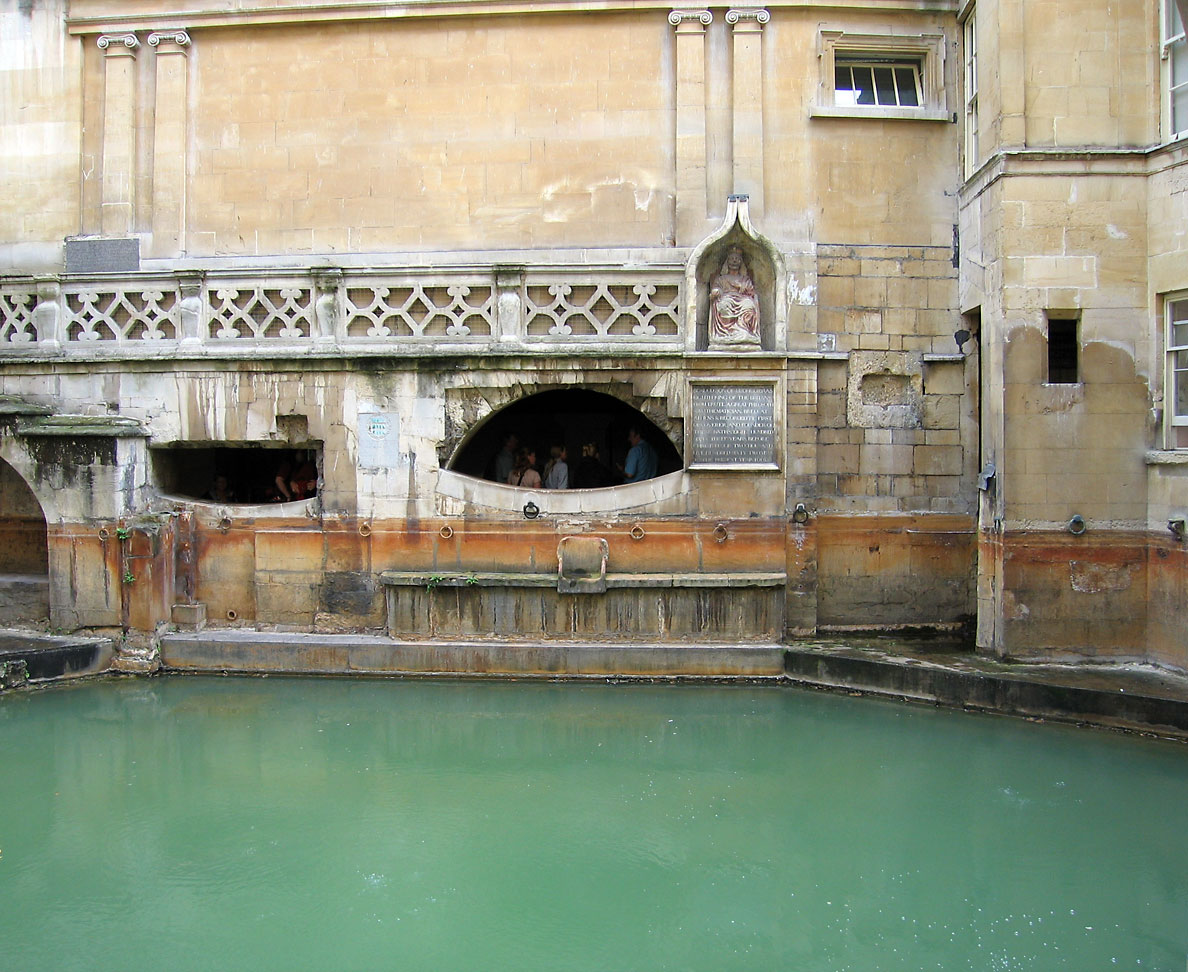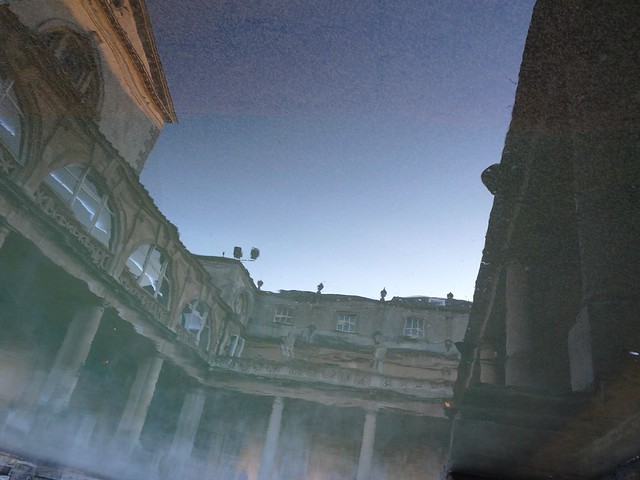
The entrance to the Roman Baths
The Roman Baths complex is a site of historical interest in the English city of Bath. The house is a well-preserved Roman site for public bathing.

Great Bath
The Roman Baths themselves are below the modern street level. There are four main features: the Sacred Spring, the Roman Temple, the Roman Bath House and the Museum holding finds from Roman Bath. The buildings above street level date from the 19th century.

The statue of King Bladud overlooking the King's Bath carries the date of 1699, but its inclusion in earlier pictures shows that it is much older than this
The Baths are a major tourist attraction and, together with the Grand Pump Room, receive more than one million visitors a year, with 1,037,518 people during 2009. It was featured on the 2005 TV program Seven Natural Wonders as one of the wonders of the West Country. Visitors can see the Baths and Museum but cannot enter the water. An audio guide is available in several languages.

The Great Bath — the entire structure above the level of the pillar bases is a later reconstruction
Gorgon's Head from the Temple Pediment
How the hot springs form at Bath
The water which bubbles up from the ground at Bath fell as rain on the nearby Mendip Hills. It percolates down through limestone aquifers to a depth of between 2,700 metres (8,900 ft) and 4,300 metres (14,100 ft) where geothermal energy raises the water temperature to between 64 °C (147.2 °F) and 96 °C (204.8 °F). Under pressure, the heated water rises to the surface along fissures and faults in the limestone.
Statues on the terrace
This process is similar to an artificial one known as Enhanced Geothermal System which also makes use of the high pressures and temperatures below the Earth's crust. Hot water at a temperature of 46 °C (114.8 °F) rises here at the rate of 1,170,000 litres (257,364 imp gal) every day, from a geological fault (the Pennyquick fault). In 1983 a new spa water bore-hole was sunk, providing a clean and safe supply of spa water for drinking in the Pump Room.

Bath Abbey West front, Roman Baths and Pump Room

Sacred Spring

Spring overflow

Frigidarium (cold pool)
Model of Roman Bath and Roman Temple of Sulis Minerva as they would have looked at their greatest extent in 4th century AD

Roman Baths by Torchlight

The Great Bath is fed with hot water from the hot

Victorian superstructure

Another view of the Victorian superstructure

Steam rising from the Great Bath.





You have read this articleUnited Kingdom
with the title Roman Baths (Bath). You can bookmark this page URL http://oinsweden.blogspot.com/2014/08/roman-baths-bath.html. Thanks!
Write by:
AN - Wednesday, August 6, 2014








.jpg)

Comments "Roman Baths (Bath)"
Post a Comment